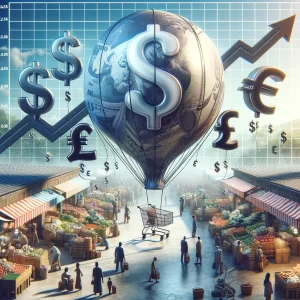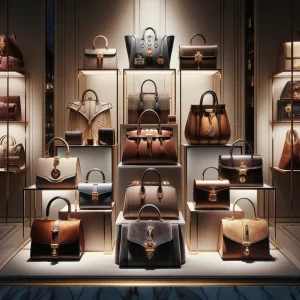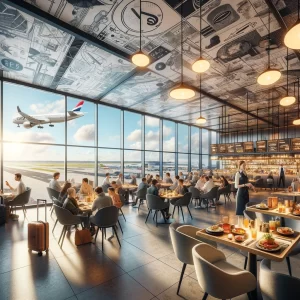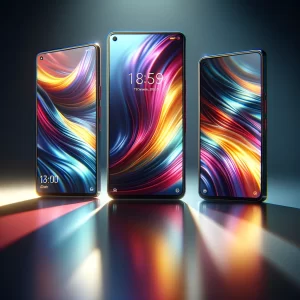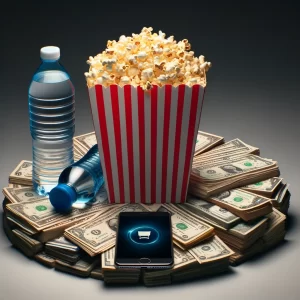Inflation is a global economic phenomenon that affects various sectors, leading to increased prices for goods and services. However, some items have seen price hikes that far exceed their intrinsic value, becoming bizarre inflation victims. Here’s a look at 10 such items that now cost more than they seem to be worth, shedding light on the peculiar impact of inflation in today’s economy.
1. Movie Theater Popcorn
The price of movie theater popcorn has soared, turning this once-affordable snack into a luxury. With a markup that can exceed 1,000%, popcorn at cinemas is a prime example of inflation gone wild. The cost reflects not just the product but also the experience of watching a film on the big screen. Despite the high price, moviegoers continue to indulge, proving how value is perceived in context.
2. Bottled Water
Bottled water is another item that has become disproportionately expensive. Often sourced from the same municipal supplies as tap water, the price of bottled water can be hundreds of times higher. This price discrepancy is attributed to branding, packaging, and marketing rather than the actual product. The convenience and perceived purity of bottled water has made it a staple despite its inflated cost.
3. College Textbooks
The cost of college textbooks has skyrocketed, with prices increasing at a rate that far outpaces inflation. This surge is linked to the specialized nature of the content and the captive market of college students. The digital age has introduced alternatives like e-books and rental services, but physical textbooks remain expensive, burdening students financially.
4. Brand-Name Medications
Brand-name medications can cost significantly more than their generic counterparts even though they have the same active ingredients. The price difference often reflects the cost of research and development, marketing, and brand prestige. While generics offer a more affordable option, the high cost of brand-name drugs can still pose a challenge for those without adequate insurance coverage.
5. Designer Fashion
Designer fashion items, including clothing, handbags, and accessories, often carry price tags that far exceed their production costs. The prices reflect not only the quality of materials and craftsmanship but also the brand’s status and theoretical exclusivity. For many, the appeal of designer labels justifies the expense, highlighting the role of perception in determining value.
6. Greeting Cards
The price of greeting cards has steadily increased, with some premium cards costing upwards of $10. This rise is attributed to the design, materials, and sentiments they convey, transforming a simple piece of paper into a significant expense. Despite the availability of digital alternatives, the tradition of sending physical cards persists, underscoring the personal touch they offer.
7. Airport Food
Airport food is notoriously expensive, with prices significantly higher than similar items outside the airport. This inflation is due to the captive audience of travelers and the logistical challenges of operating in an airport. While the convenience is undeniable, the cost can be hard to justify, especially for frequent flyers.
8. Cable TV Subscriptions
Cable TV subscriptions have become increasingly expensive, with costs rising despite the advent of streaming services. The price reflects not just the content but also the infrastructure and service provided. As consumers seek more flexible and affordable alternatives, cable providers are challenged to justify their pricing.
9. Smartphones
The latest smartphones come with hefty price tags, driven by technological advancements and brand prestige. While these devices offer cutting-edge features, what they provide can exceed the average user’s needs, prompting questions about their true value. As a result, the market for used and refurbished phones has grown, offering more affordable options.
10. Concert Tickets
Concert ticket prices have soared, with fees for popular artists reaching astronomical levels. While the cost includes not just the performance but also the experience and memories associated with live music, many question whether it’s worth the price of admission. But despite the growing price tag, demand remains strong, driven by fans’ desire to connect with their favorite artists.
Should You Avoid These Inflation Victims?
Ultimately, these examples of inflation victims illustrate the complex interplay between cost, value, and perception in an inflationary environment. While some items may seem to cost more than they’re worth, their value is often defined by more than just their price tag, encompassing factors like experience, convenience, and personal significance. As a result, certain people may find the purchase – even with a higher price tag – worthwhile, so keep that in mind.
Catherine is a tech-savvy writer who has focused on the personal finance space for more than eight years. She has a Bachelor’s in Information Technology and enjoys showcasing how tech can simplify everyday personal finance tasks like budgeting, spending tracking, and planning for the future. Additionally, she’s explored the ins and outs of the world of side hustles and loves to share what she’s learned along the way. When she’s not working, you can find her relaxing at home in the Pacific Northwest with her two cats or enjoying a cup of coffee at her neighborhood cafe.

